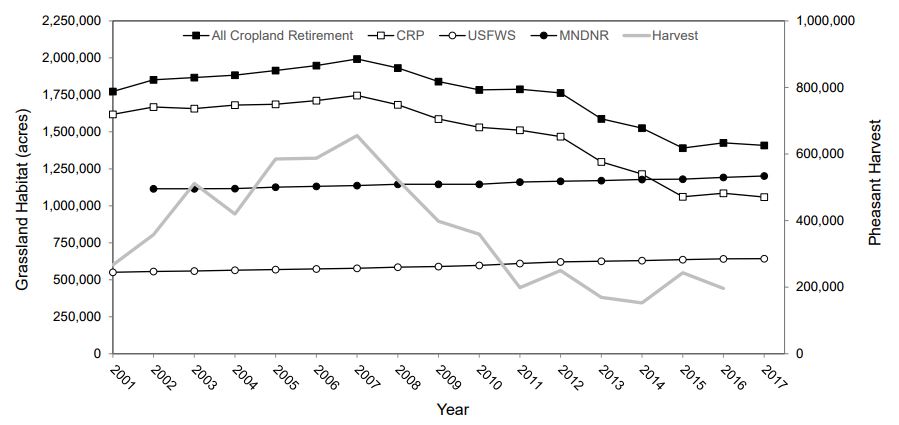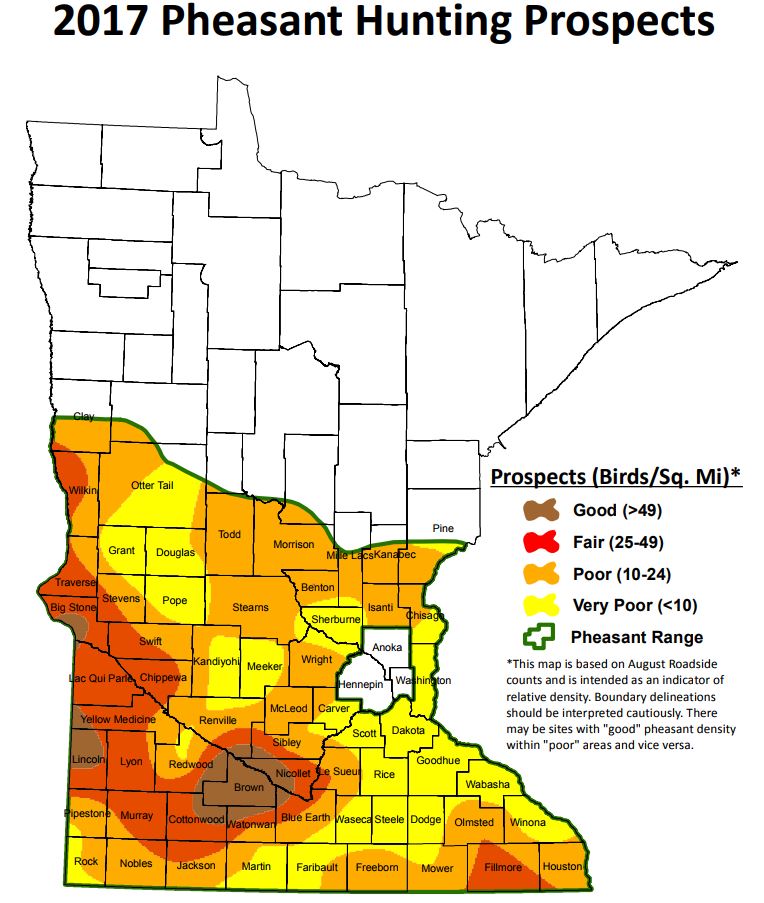Pheasants Forever explores the Minnesota picture. Pheasant counts are down, but birds are holding their own where habitat is good.
By Tom Carpenter
Minnesota always has ebbs and flows in its pheasant habitat and bird counts. The state has been in an ebb situation for a few years now, with all the acres (over 686,000) that have come out of the Conservation Reserve Program (CRP) since 2007.
Pheasant counts are down this year, but birds are by no means down for the count.
“Summer weather was relatively normal, and overall favorable for late-season nesting attempts and brood survival,” reports Lindsey Messinger, Wildlife Research Biologist with the Minnesota Department of Natural Resources (DNR) Farmland Wildlife Populations and Research Group, in Madelia. “There were a few isolated areas receiving heavier-than-normal rainfall events that may have impacted chick survival locally.”
Minnesota conducts an extensive annual roadside wildlife survey in late summer, with a focus on pheasants. “Our 2017 statewide pheasant index, at 38.1 birds/100 miles, fell 26% from 2016 and was below the 10-year and long-term averages,” says Messinger. “Although some areas experienced localized early spring snow storms and heavy rainfall events which likely impacted nest success and brood survival locally, weather over the reproductive season was mostly favorable.”
“The two primary drivers of the pheasant index produced from our surveys each year are weather and habitat,” says Messinger. “With favorable weather conditions, we can’t ignore consistent grassland habitat loss occurring statewide.”
“Minnesota, like many other midwestern states, depends largely on Farm Bill programs such as CRP to put and keep grassland habitat on the landscape,” says Messinger. “Minnesota has consistently lost grassland habitat enrolled in CRP since 2007. In 2017 alone, 26,327 acres of CRP were lost statewide with a majority of those lost acres occurring within the pheasant range.”
The following Minnesota chart tells the story. Pheasant production (and hunter harvest) mirrors the amount of grassland on the landscape:

Anecdotally and on local levels, the news is better. Hunters should take heart. Scouting, and hunting hard, will produce birds. And who’s afraid of hunting hard?
“Although our statewide and regional pheasant indices are down, landowners and wildlife managers are still seeing birds, and our rooster index (6.4/100 miles) is 11% higher this year than in 2016,” Messinger points out. “Hunters should certainly still get out there and look for birds. They may just be a little more challenging to find this year.”
“Total pheasants observed per 100 miles ranged from 19.2 birds in the Southeast to 54.6 birds in the South Central region,” says Messinger. The Central, East Central and Southwest regions showed the most substantial bird count decreases from 2016. Still the Southwest started out with what was probably the most birds.
The following map should also help hunters find the best bird densities:

“Fortunately for hunters, our
Walk-In Access (WIA) program continues to grow, with over 26,000 acres of private lands open to public access hunting this year,” says Messinger. “The best regions of the state for pheasant hunting and walk-in access this fall should be in the West-Central (Big Stone, Lac Qui Parle, and Yellow Medicine Counties), Southwest (Cottonwood, Lincoln, Lyon, and Redwood Counties), and South Central (Blue Earth, Brown, Nicollet, Sibley, and Wantonwan Counties) of Minnesota.”
Minnesota Hunting Notes
*“Look for an area with high densities of grassland to produce the highest number of birds this hunting season,” says Messinger.
*Don’t automatically pass up lighter-shaded areas on Minnesota’s pheasant density map (above). Many hunters will do just that – pass them up. Pockets of good habitat in these areas will offer solid hunting.
Links
2017 Minnesota Roadside Wildlife (Pheasant) Survey
Walk-In Access Atlas
Minnesota Wildlife Management Areas
Minnesota Pheasant Page
Tom Carpenter is Digital Content Manager at Pheasants Forever.